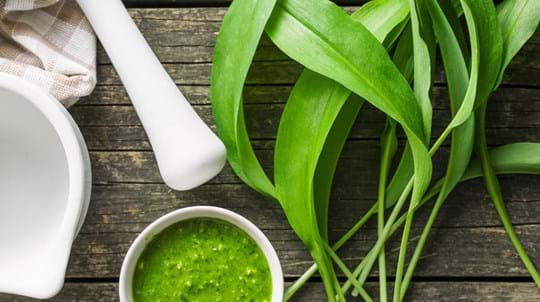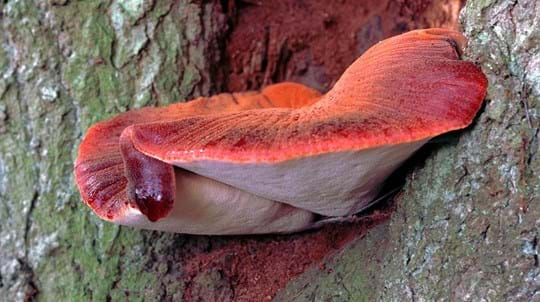Spot the signs of the seasons
Let us know what's happening to animals and plants near you and help scientists track the effects of climate change on wildlife.
Explore Nature's Calendar
Content manager, botanist and tree lover
As the leaves begin to turn, the nuts and berries on hedgerows and in woods are ripening.
Here are our top foraging finds for October, from vitamin C packed rosehips to tasty nuts.
Please remember to only take what you absolutely need (and only when there is a plentiful supply), and only pick what you can identify with certainty. Read our sustainable foraging guidelines for more advice.
On a good year, bullace fruits can literally weigh down the hedgerow.
The fruits are similar to damsons and can be used to make crumbles, jams and preserves, fruit wine and fruit liqueurs like sloe gin.
Small, oval fruits can vary in colour but are usually blue, purple or black. They tend to taste acidic until they're ripe. This is a great late season fruit as it ripens up to six weeks later than many others from October to November.
Beech nuts are still ripening into October. They're a bit small to collect in numbers but make a tasty nibble on an autumn walk.
Scrape off the outer brown skin to reveal the triangular seed. If you do collect more than a few, they can be used in a similar way to pine nuts, sprinkled on salads and risottos. Roast in the oven then place between two tea towels and rub to remove shells. Beech nuts can be slightly toxic if consumed in large quantities due to the tannins and alkaloids.
Look out for pairs of three-sided nuts in bristly cases from mid-September and throughout October.
A common tree in woods, hedgerows and gardens, hazel bears its crop of nuts (also called cobnuts and filberts) from late August.
If you’re picking hazelnuts early in the season when they’re still green, the shelled nuts make a tasty nibble to munch on while you’re out walking. If you collect enough, the shelled nuts can be roasted in the oven or used to make hazelnut butter.
It might be advisable to collect hazelnuts when they’re still young and green in late August to mid-September. Most ripe nuts are found in September and October, depending on the weather.
Rosehips are the red and orange seed pods of rose plants commonly found in hedgerows.
The hips have a fleshy covering that contains the hairy seeds - the irritant hairs were traditionally used by children to make itching powder. The outer layer is packed with vitamin C and they are renowned for helping stave off winter colds. They are good in wines, jellies, jams and can be used to make a delicately flavoured rosehip syrup for cordial or pouring onto ice cream or pancakes.
Look for bright red rosehips from September to November along hedgerows and woodland fringes. Snip or carefully pull the hips close to the base of each pod (to avoid being attacked by prickly thorns).
The blackthorn is best known for its crop of tart, acidic fruits used to make the deep-red, wintry drink, sloe gin.
The general rule is to pick after the first frost as it softens the skins and helps to release the juices. You can get round this by picking early and freezing at home instead. Make sloe gin or try using sloes for whisky, jams and vinegar.
The blue-black berries are ready for picking from the end of September to December. In some years, blackthorn trees along hedgerows and fields are heavy with fruit.
A favourite at this time of year, and a Christmas classic. Sweet chestnut trees are not native - they were introduced to the UK by the Romans.
The nuts can be baked, roasted, boiled or microwaved. Remember to score a cross in them to stop them from exploding when they are cooked. Once cooked and peeled they can be eaten as they are or used in desserts and stuffings. You can also candy them, puree them or store them in syrup.
You’ll find the best crop at the foot of large established trees. Trees start dropping nuts from October and into late autumn and early winter.
Walnut trees were first introduced to the UK by the Romans for their walnuts.
Crack open the shells to get to the nut. They can be eaten raw (when they're 'wet'), dried or pickled. Dried nuts can apparently be stored for around a year. They can be added to both sweet and savoury dishes.
Trees can be found throughout the UK often in large gardens and parks. The nuts are covered with a green, fleshy husk that starts to split as it ripens. Pick them in late autumn.
Let us know what's happening to animals and plants near you and help scientists track the effects of climate change on wildlife.
Explore Nature's Calendar
Visiting woods
See what's in season with our guide to sustainable foraging with top tips on how to pick, cook and eat wild plants.

Visiting woods
Our favourite foraging recipes using wild harvested plants from the British countryside.

Blog
Helen Keating • 29 Oct 2018